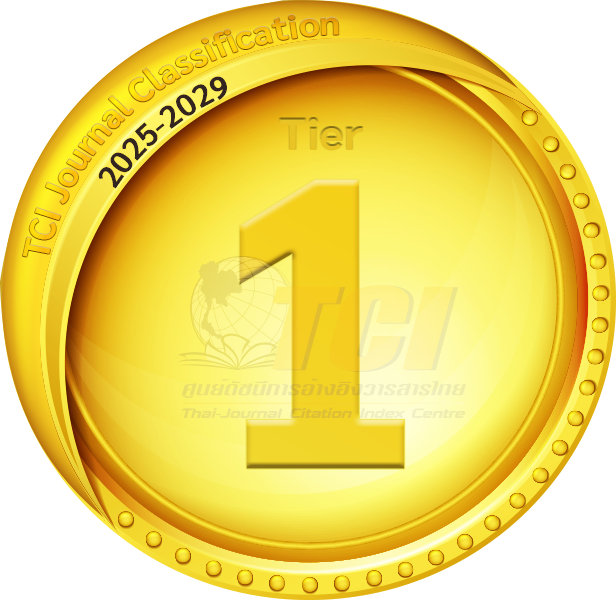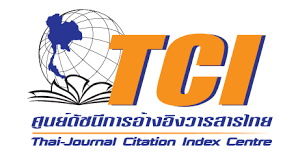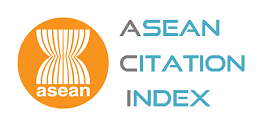Exploring Barriers to Low Carbon Tourism Development in Thailand: A Supply-Side Perspective
- Patteera Pantaratorn, Faculty of Management Science, Silpakorn University, Bangkok 10170, Thailand & College of Tourism and Hospitality, Rangsit University, Pathum Thani 12000, Thailand, Corresponding author’s E-mail: patteera.p@rsu.ac.th
- Jittasak Putjorn, Faculty of Management Science, Silpakorn University, Bangkok 10170, Thailand
- Wongladda Weerapaiboon, Faculty of Management Science, Silpakorn University, Bangkok 10170, Thailand
Abstract
The research aims to achieve the following objectives: (1) To explore the barriers hindering the development of low carbon tourism in Thailand and (2) To conduct Exploratory Factor Analysis (EFA) and Confirmatory Factor Analysis (CFA) on the identified barriers of low carbon tourism development in Thailand. The study adopts a mixed methods approach, combining qualitative and quantitative techniques. Data collection involved conducting in-depth interviews with 17 key informants involved in the supply-side of tourism. The data was analyzed using Nvivo 20 software, and the findings were utilized to develop a questionnaire. The questionnaire was then administered to 224 individuals engaged in the supply-side of tourism to assess their opinions. The collected data underwent EFA and CFA for further analysis. The research findings revealed three dimensions of barriers to low carbon tourism development in Thailand: Structure Constraints, Intrapersonal Constraints, and Interpersonal Constraints. These results provide insights into the specific barriers inhibiting the development of low carbon tourism in Thailand and can guide policymakers, industry stakeholders, and researchers in formulating strategies to overcome these obstacles.
Keywords: low carbon tourism, barriers of low carbon tourism, low carbon tourism development, barrier of low carbon tourism development, low carbon tourism in Thailand, supply-side of low carbon tourism
DOI: 10.14456/jcsh.2023.8
References
Khalid, S. N. A., Saad, N. H. M., & Mahadi, R. (2013). Barriers to integrating tourism in the development planning: The perspective of Malaysia local authorities. In International Conference on Tourism Development: Building the Future of Tourism. Universiti Sains Malaysia, Penang, Malaysia
Bagozzi, R., & Yi, Y. (1988). On the evaluation of structural equation models. Journal of the Academy of Marketing Sciences, 16, 74-94. https://doi.org/10.1007/BF02723327
Byrne, B. M. (1998). Structural equation modeling with LISREL, PRELIS, and SIMPLIS: Basic concepts, applications, and programming. New York, US: Psychology Press.
Byrne, B. M. (2013). Structural equation modeling with Mplus: Basic concepts, applications, and programming. New York, US: Routledge.
Byrne, B. M. (2016). Structural Equation Modeling with AMOS: Basic Concepts, Applications, and Programming (3rd Edition). New York, US: Routledge.
Boddy, C. R. (2016). Sample size for qualitative research. Qualitative Market Research: An International Journal, 19(4), 426-432. https://doi.org/10.1108/QMR-06-2016-0053
Cabrini Luigi, Murray Simpson, and Daniel Scott. (2009). “From Davos to Copenhagen and beyond: Advancing tourism’s response to climate change.” in UN Copenhagen Climate Change Conference. Spain: UNWTO. Retrieved from http://sdt.unwto.org/sites/all /files/pdf/537_from_davos_to_ copenhagen_and_ beyond_unwto_paper_electronic-version_lr.pdf
Chang, T. Y., Shen, C. C., & Li, Z. W. (2019). Constructing a risk management indicator model for travel agencies: A resource integration perspective. Asia Pacific Journal of Tourism Research, 24(10), 1021-1033. https://doi.org/10.1080/10941665.2019.1653333
Changbo, S., & Jingjing, P. (2011). Construction of low-carbon tourist attractions based on low-carbon economy. Energy Procedia, 5, 759-762. https://doi.org/10.1016/j.egypro.2011.03.133
Cronbach, L. J. (1990). Essentials of psychological testing (5th ed.). New York, US: Harper Collins Publishers.
Davras, Ö., Caber, M., & Crawford, D. (2019). Comparison of the holiday tourism constraints of mono- and bicultural people. International Journal of Culture, Tourism and Hospitality Research, 13(2), 190–203. https://doi.org/10.1108/IJCTHR-05-2018-0071
Diamantopoulos, A., Siguaw, J. A., & Cadogan, J. W. (2000). Export performance: The impact of cross-country export market orientation. In American Marketing Association. Conference Proceedings, 11(1) (Winter), 177, American Marketing Association.
Dai, Y. Y., Shie, A. J., Chu, J. H., & Wu, Y. C. J. (2022). Low-Carbon Travel Motivation and Constraint: Scales Development and Validation. International Journal of Environmental Research and Public Health, 19(9), Article 5123. https://doi.org/10.3390/ijerph19095123
Fornell, C., & Larcker, D. F. (1981). Evaluating structural equation models with unobservable variables and measurement error. Journal of Marketing Research, 18(1), 39–50. https://doi.org/10.1177/002224378101800104
Hair, J. F., Anderson, R. E., & Tatham, R. L. (1987). Multivariate data analysis with readings (2nd ed.). New York, US: Collier Macmillan.
Hair, J. F. Jr., Anderson, R. E., Tatham, R. L. & Black, W. C. (1995). Multivariate Data Analysis (3rd ed.). New York, US: Collier Macmillan.
Hair, J., Black, W., Babin, B., Anderson, R. & Tatham, R. (2006) Multivariate Data Analysis. (6th ed.). New Jersey, US: Pearson Prentice Hall, Upper Saddle River.
Hair, J. F., Black, W. C., Babin, B. J., & Anderson, R. E. (2013). Multivariate Data Analysis: Pearson New International Edition (7th ed.). London, UK: Pearson.
Hair Jr, J. F., Howard, M. C., & Nitzl, C. (2020). Assessing measurement model quality in PLS-SEM using confirmatory composite analysis. Journal of Business Research, 109, 101-110. https://doi.org/10.1016/j.jbusres.2019.11.069
Heung, V. C., Kucukusta, D., & Song, H. (2011). Medical tourism development in Hong Kong: An assessment of the barriers. Tourism management, 32(5), 995-1005. https://doi.org/10.1016/j.tourman.2010.08.012
Hsiao, T. Y., Sung, P. L., Tsai, H. Y., Wang, T. S., & Rong-Da Liang, A. (2021). Establishing a model of low carbon tour promotion for use by travel agencies from the perspective of shared value theory. Tourism Management Perspectives, 37, Article 100787. https://doi.org/10.1016/j.tmp.2020.100787
Hsieh, H. F., & Shannon, S. E. (2005). Three approaches to qualitative content analysis. Qualitative Health Research, 15(9), 1277-1288. https://doi.org/10.1177/1049732305276687
Hu, L., & Bentler, P. M. (1999). Cutoff criteria for fit indexes in covariance structure analysis: Conventional criteria versus new alternatives. Structural equation modeling: a multidisciplinary journal, 6(1), 1-55. https://doi.org/10.1080/10705519909540118
Jöreskog, K. G., & Sörbom, D. (1996). LISREL 8: User's reference guide. Lincolnwood, UA: Scientific Software International, Inc.
Kanlaya, W. (2018). SPSS FOR WINDOWS. Bangkok, Thailand: Chulalongkorn University Press.
Kennedy, D. B. (1992), Classification techniques in accounting research: Empirical evidence of comparative performance. Contemporary Accounting Research, 8(2), 419-442. https://doi.org/10.1111/j.1911-3846.1992.tb00853.x
Kline, R. B. (1998). Principles and Practice of Structural Equation Modeling. New York, US: The Guilford Press.
Kline, R. B. (2010). Promise and pitfalls of structural equation modeling in gifted research. In B. Thompson & R. F. Subotnik (Eds.), Methodologies for conducting research on giftedness. US: American Psychological Association.
Liu, Y. (2014). Barriers to the adoption of low carbon production: A multiple-case study of Chinese industrial firms. Energy policy, 67, 412-421. https://doi.org/10.1016/j.enpol.2013.12.022
Luo, J. M., Lam, C. F., & Ye, B. H. (2019). Barriers for the Sustainable Development of Entertainment Tourism in Macau. Sustainability, 11(7), 1-13. https://doi.org/10.3390/su11072145
Mhyre, J. M. (2010). Assessing quality with qualitative research. Canadian Journal of Anaesthesia, 57(5), 402–407. https://doi.org/10.1007/s12630-010-9290-8
Miles, M. B., & Huberman, A. M. (1994). Qualitative Data Analysis: A Sourcebook of New Methods (2nd ed.). Beverly Hills, CA: Sage Publications.
Mirahmadizadeh, A., Delam, H., Seif, M., & Bahrami, R. (2018). Designing, constructing, and analyzing Likert scale data. Journal of Education and Community Health, 5(3), 63-72. https://doi.org/10.21859/jech.5.3.63
Neter, E., & Ben-Shakhar, G. (1989). The predictive validity of graphological inferences: A meta-analytic approach. Personality and Individual differences, 10(7), 737-745. https://doi.org/10.1016/0191-8869(89)90120-7
Nicomsom, A. & Thirasak, U. (2017). Management Process for Low Carbon Tourism : A Case Study of Koh-Mak in Trad Province. Silpakorn Educational Research Journal, 9(2), 205-216.
Pimlapas, P. (2017). Tourism Carbon footprints of the Consumption in Marine and Beach Destination: The Case of Koh Samui, Surattanee. Veridian E-Journal, 10(1), 1087-1102.
Pittaya, S. (2011). Definitions, concepts, problems, and obstacles of sustainable tourism development. Retrieved October 1, 2022, from http://sustainabletourismdpu.blogspot.com/ 2011/02/blog-post_7353.html
Rao, N. (2018). Unit-35 Threats and Obstacles to Tourism. Indira Gandhi National Open University (IGNOU), New Delhi, India.
Rokni, L., Turgay, A. V. C. I., & Park, S. H. (2017). Barriers of developing medical tourism in a destination: A case of South Korea. Iranian journal of public health, 46(7), 930-937.
Rose, S., Spinks, N., & Canhoto, A. I. (2015). Management research applying the principles. New York, US: Routledge.
Samardali-Kakai, L. (2013). Obstacles which significantly affect tourism development in Jordan. Australia: Edith Cowan University.
Schumacker, R. E., & Lomax, R. G. (2010). A beginner's guide to structural equation modeling. New York, US: Routledge.
Steiger, J. H. (1990). Structural model evaluation and modification: An interval estimation approach. Multivariate behavioral research, 25(2), 173-180. https://doi.org/10.1207/s15327906mbr2502_4
Tabachnick, B. G., Fidell, L. S., & Osterlind, S. J. (2001). Using multivariate statistics. New York, US: Pearson.
United Nations. (2017). Sustainable Tourism. Retrieved October 20, 2022, from https://sustainabledevelopment.un.org/topics/sustainabletourism
UNWTO. (2018). Guidebook on Tourism and Climate Change - Second Edition. Retrieved October 21, 2022, from https://www.e-unwto.org/doi/pdf/10.18111/9789284419876

Indexed in


Search